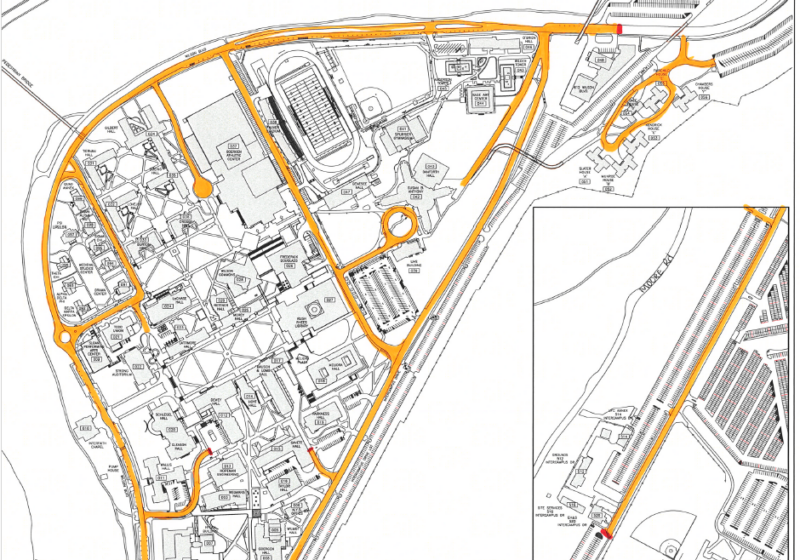Anyone following politics today has probably noticed the bitter partisanship and ideological intensity preventing any sort of agreement in Washington. Some people wish we could go back to the days of parties working together flawlessly as U.S. representatives first and partisan hacks second. But there is one big problem. Historical trends have culminated in this current Congress to create these unbridgeable disagreements that cannot be undone, at least not without some highly improbable intervention.
Anyone who doesn’t know history but follows current politics today will be beyond shocked at this next fact: The Southeastern United States, especially the deepest, poorest, most racist parts of the Deep South today the base of the modern Republican Party, was once the most solidly monolithic supporter of the Democratic Party. That’s right: Reactionary racists like Strom Thurmond, David Duke, Jesse Helms and George Wallace were once the proudest Democrats that could ever be. The Republicans, the party of Lincoln, had virtually no presence in the South whatsoever after all, the Republicans were the party of ‘Northern Aggression.” And because very few blacks and poor whites could vote, it was an all-white block of middle-class and wealthy southern Democratic men (and later women) who voted for Democrats by almost unanimous margins (in South Carolina in 1936, FDR won 98-2).
For the political junkies reading, let’s imagine Chuck Schumer and Jeff Sessions being in the same party. You can’t, can you? But that’s exactly what happened during the 1930s and 40s. With liberal northern Democrats and reactionary southern Democrats, these two wings didn’t really get along. As for the Republicans, their base was New England liberals and Midwestern conservatives, and they also didn’t get along.
Some of you are probably wondering: If liberals and conservatives existed in both parties, what was the difference between the parties? Here’s the answer: there wasn’t one. Liberal Republicans were sometimes more liberal than liberal Democrats. Bipartisanship occurred when there were really no party differences to begin with. In the 1950s, the parties were so similar and non-polarized that political scientists were concerned that voters were not being offered true choices. Keep in mind, this type of similarity across parties is very abnormal for a two-party system. The idea of a ‘conservative coalition” spanning across parties was rather unusual, especially for such a long time.
What changed it? The spark was the Civil Rights Movement. The southern Democrats were viciously resistant, and after Republican presidential candidate Sen. Barry Goldwater in 1964 opposed the 1964 Civil Rights Act for philosophical (not racial) reasons, the transition to the Republicans began with Strom Thurmond taking the lead and switching parties. With suburban development and white flight, the Consciousness Revolution that tore American culture apart at the seams, the rise of the culturally divided Baby Boomers and the aging of the civic-minded, team-building GI Generation of WWII, the liberals started to run into the Democratic Party, and the conservatives into the Republican Party.
The ideological sorting is becoming more and more complete with each passing year, with moderates having no true home. The reason the remaining moderate Republicans won’t vote with Obama regardless of compromises is that standing up for themselves will earn the ire of the conservative base that controls the GOP. To be fair, the Democrats face the same constraint with their liberal base just not as much.
If you want to go back to the 1950s type of bipartisanship, you have to turn the South from a diverse, multicultural economic boom region back into a poor one-party state run by wealthy, vicious white supremacists who kept their power through fear and terrorism. And you won’t get far with that suggestion. Even if you did, it would not be possible to do so. The parties cannot return to their past.
Sure, there are far more conservative Democrats than liberal Republicans, but with blogs, news channels with biased agendas and the endless need to rally your base, we are only bound to become more polarized. Pretty soon, Democrats Ben Nelson and Mary Landrieu will be replaced by Republicans, and Republicans Susan Collins and Scott Brown will be replaced by Democrats. Anyone out of step with their constituents’ ideology has a hard time getting re-elected.
Scott Brown of Massachusetts, who won in a perfect storm of a weak opponent, discontent with Washington and unpredictable turnout patterns in a special election, has a ride for his life in 2012. Any Republican who thinks Brown is presidential material is deluded: He is pro-choice, and he has already voted with the Democrats several times. He will not survive in 2012 because of more predictable turnout patterns, a political climate better for Democrats due to a better economy and (most likely) an opponent who actually campaigns instead of going on vacation. This is obviously not a guarantee, since the future is difficult to predict. But with more ideological polarization happening by the day, political obstruction is bound to get worse.
Dawidowicz is a member of
the class of 2012.





